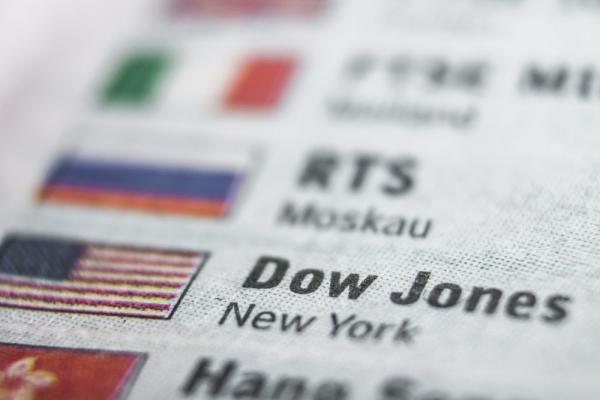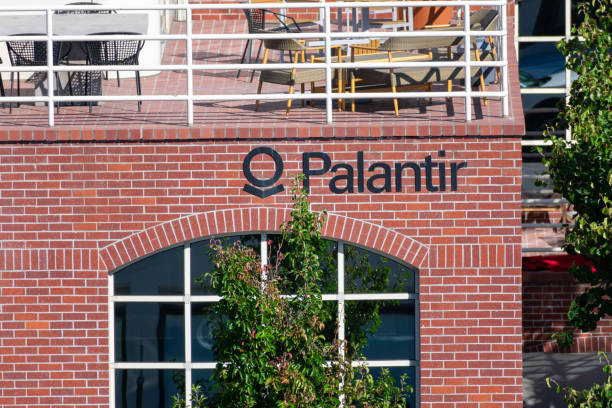Intel’s Quiet Reinvention Gains Speed
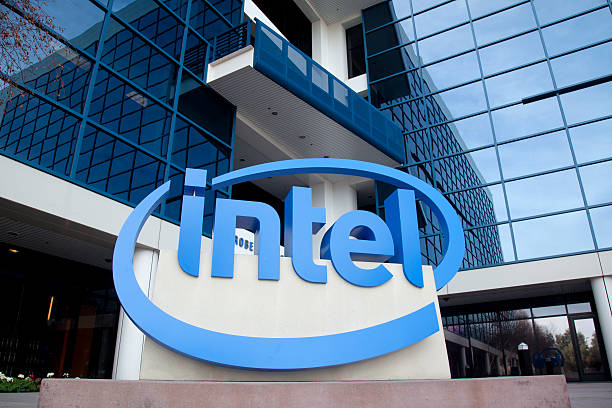
- Intel’s Foundry segment grew 7% year-over-year to $4.7 billion, emerging as a core part of its turnaround.
- Operating expenses are set to decline from $20 billion to $16 billion by 2026, supporting long-term margin recovery.
- Gross margins fell to 39.2% in Q1 2025, with further compression expected due to product mix and ramp costs.
- Despite a forward P/E of 71.25, Intel trades at just 0.87x book value, signaling deep-value potential amid restructuring.
TradingKey - At $22.55 per share, Intel (INTC) isn’t trading like an IT titan; it’s trading like a value trap. And yet, underneath the hood, a monumental shift is occurring quietly. Under new CEO Lip-Bu Tan, Intel is undertaking an elaborate reversal characterized by cost-cutting, culture shift, and movement toward AI-based processing. Investors are skeptical, handing the stock a substantial valuation haircut due to execution concerns and unforgiving competition. But is the market too early writing an obituary for one of tech’s earliest giants?
.jpg)
Source: Seeking Alpha, Stock Price Summary
Despite the harsh macro environment and softening margins, Intel’s restructuring has teeth. Delayering the management structure, decreasing decision-making silos, and capping op-ex expenditure are part of the package. The question in investors' minds is whether such radical measures will deliver sustained margin recovery and competitiveness in the increasingly tough semiconductor environment.
Core Engine Under Restoration: What Intel Still Does Right
Intel’s business remains a mix of legacy leadership and new bets. Client Computing Group (CCG) generated $7.6 billion during Q1 2025, down by 8% YoY, while Data Center and AI (DCAI) revenue expanded by 8% to $4.1 billion.
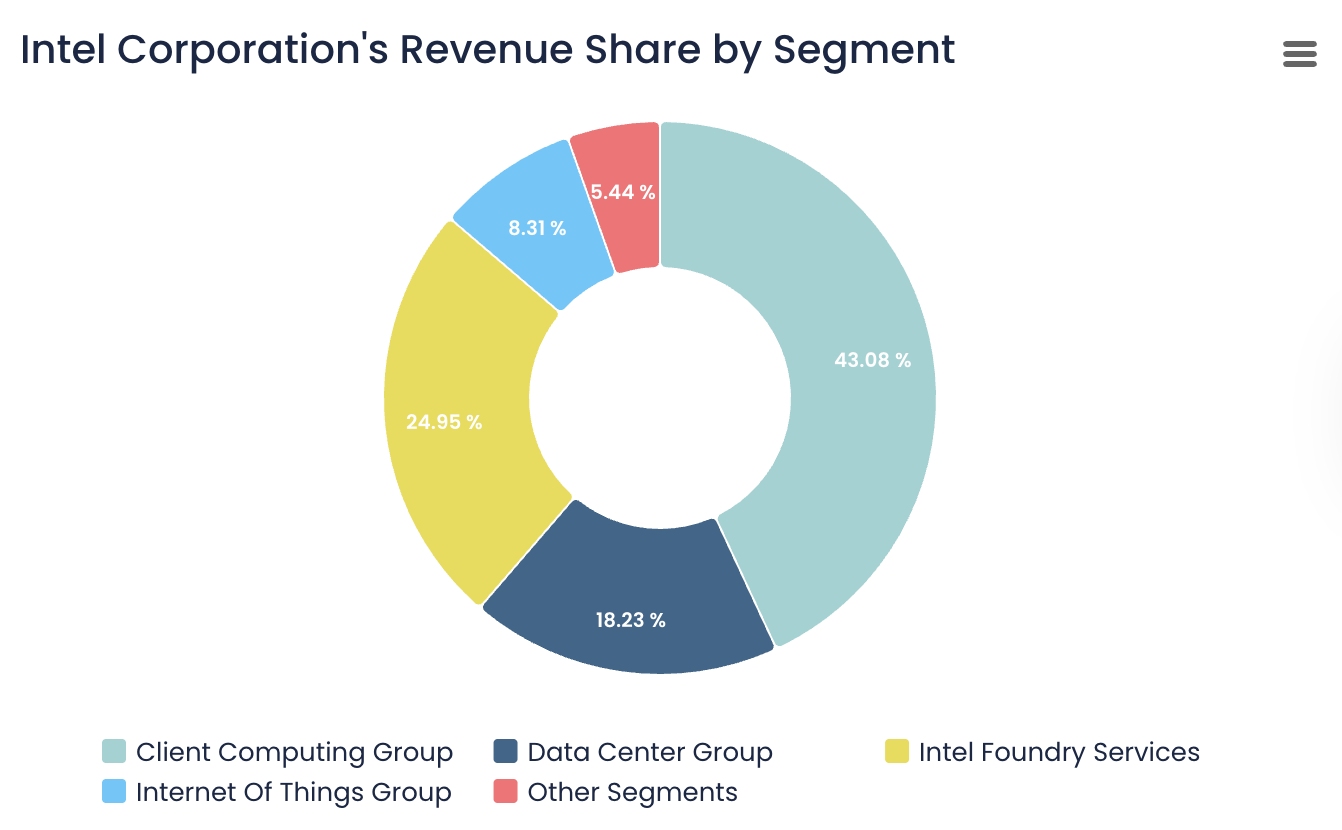
Source: Bull Fincher
Both individually are at the heart of Intel’s value proposition. Most striking, however, is the 7% YoY growth at Intel Foundry, now quarterly booking sales of $4.7 billion and becoming an important growth engine within Intel’s IDM 2.0 strategy.
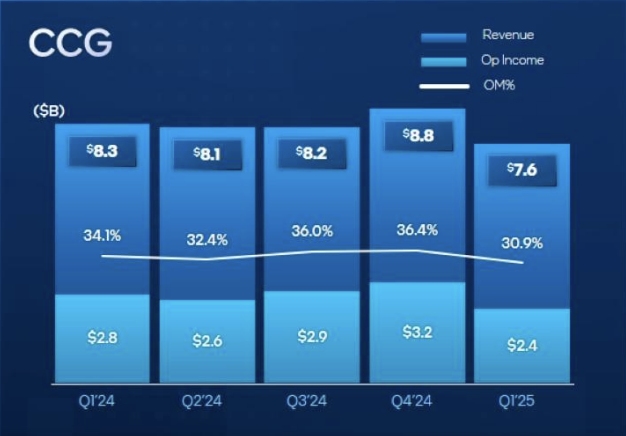
Source: Intel Q1 Earnings
.jpg)
Source: Intel Q1 Earnings
Foundries that previously contributed to margin drag are now the foundation of Intel’s strategy. That it’s even investing in foundries when it’s cutting CapEx elsewhere is evidence that it’s looking at the long term with an ecosystem vision. That it’s divesting a 51%-ownership level of the Altera business to Silver Lake and concentrating capital on next-generation platform technologies like Intel 18A and Panther Lake shows an attempt at rebooting silicon stacks and unleashing bandwidth for ops.
However, execution challenges persist. Adjusted free cash flow remains considerably negative at -$3.7 billion in Q1 despite $0.8 billion of operating cash flow. Gross CapEx comes in at $6.2 billion, above internal cash generation, but Intel intends to fill the gap with the assistance of $3–5 billion of government incentives and $4–5 billion of partner contributions.
Stacked Odds: Rivals Scale, Intel Streamlines
Intel’s competition space is as unforgiving as it is dynamic. AMD, Nvidia, and TSMC continue to stay one step ahead, each dominant in their own discrete segments of CPUs, AI acceleration, and deep fabrication. Nvidia’s AI software moat and AMD’s price-performance matrix leadership have placed Intel on the back foot in numerous battlefields ranging from gaming laptops to AI inference chips.
While Intel struggles with gross margins between 36–39%, peers like Nvidia just keep reporting 70%+ margins, by and large due to software-enabled monetization. In CPUs, AMD’s Zen architecture has aligned with Intel’s roadmap by years. And TSMC’s leadership in process node makes Intel’s internal fabrication efforts a long-term wager that depends on the timely execution of 18A and foundry credibility.
But Intel isn’t undifferentiated at all. Its proper execution of an end-to-end IDM model gives it a vertical integration benefit that Nvidia and AMD don’t possess. Intel’s leadership AI focus, buttressed by renewed emphasis on “workload-first” design and the upcoming Panther Lake product arrival, might just get the firm back to leadership in power-optimized, data-intensive compute.
Under the Microscope: Strategic Shifts, Margin Headwinds, and Capital Efficiency
Intel’s future is reliant on structural and financial discipline. Intel agreed to cut OpEx to $17 billion during 2025 and to $16 billion during 2026, eliminating unnecessary fat from an oversized cost structure that previously approached $20 billion. Note that Q1 R&D and MG&A fell 15% YoY on a non-GAAP basis, demonstrating initial traction with these initiatives.
Gross margins are constricted, falling by nearly 6 percentage points YoY to 39.2% on a non-GAAP basis, due to ramp costs at Lunar Lake and unfavorable product mix. Management forecasts additional compression to ~36.5% during Q2. But the upside is product roadmap timing: 2026 stands to gain from Panther Lake and better foundry yields.
.jpg)
Source: Intel Q1 Earnings
On capital spending, Intel is cutting the 2025 gross CapEx from $20 billion to $18 billion, with net CapEx targeting $8–11 billion with offset for incentives. These are cuts that are meant to harmonize growth with cash preservation, especially amid sustained negative free cash flow. The company is also focusing on capital-light divestitures, as with the disposal of the Altera stake, in order to stay liquid and focused.
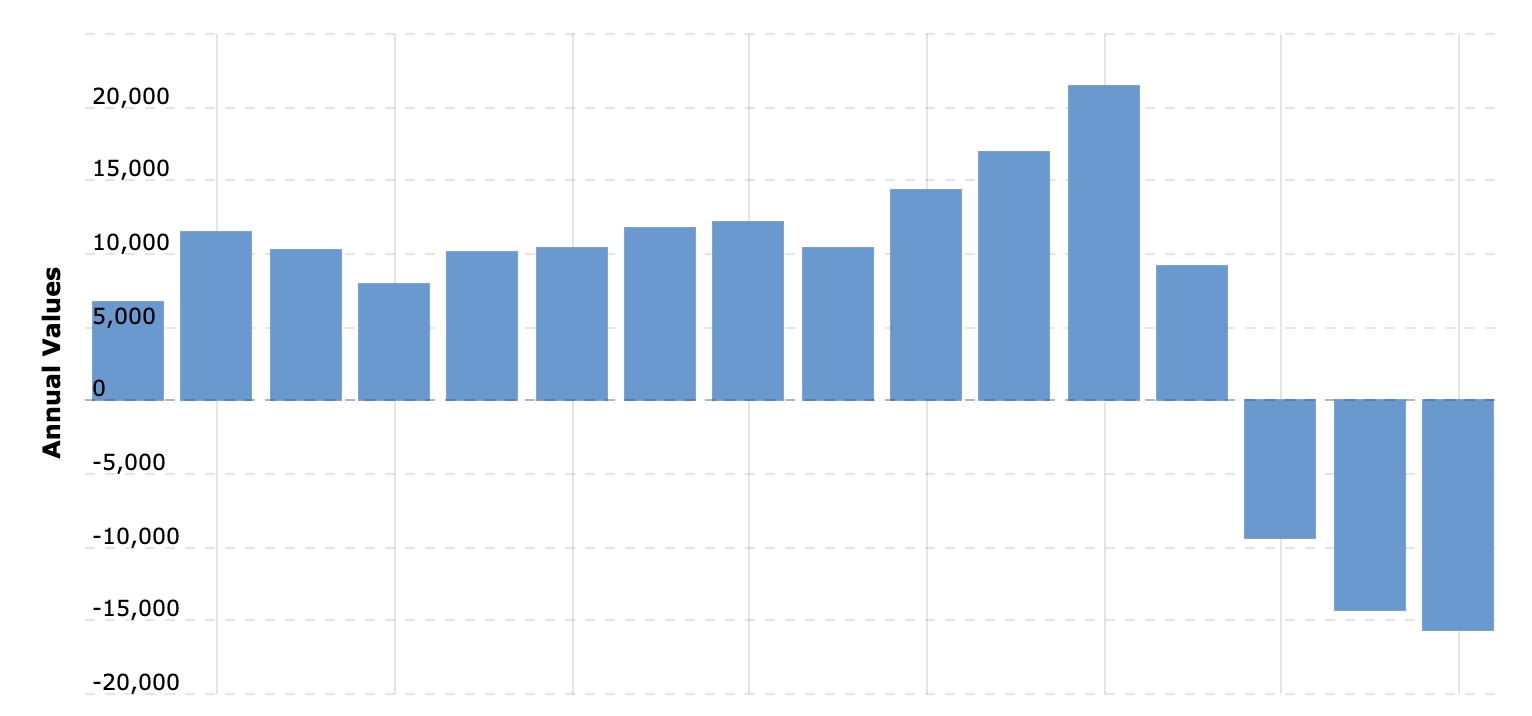
Source: Macro Trends, Intel Free Cash Flow 2010-2025
However, the latter’s capital efficiency is considerably low among peers. Its forward EV/EBIT stands at 60.91x, substantially above the 18.67x sector median, suggesting that the market doesn’t believe in near-term earnings. However, with 0.87 price/book (FWD) and 1.72 price/sales (TTM), there are deep-value signals with -78.25% and -41.55% discounts relative to sector medians, respectively.
Valuation: A Classic Deep Value Bet, or Value Trap in Disguise?
Intel's forward P/E at 75x might seem hideously high, especially for an organization with near-zero forward EPS guidance, but it is largely a sign of low earnings rather than overpricing. Once we normalize Intel for cyclicality and CapEx resets, it acts more like a call option on successful execution than like a regular compounder.
Its enterprise value/sales (EV/Sales FWD) ratio of 2.6x is only slightly lower than the sector median of 2.9, yet price/book at 0.98 makes it one of the lowest-priced large-cap tech names relative. Book value remains robust, and liquidity at nearly $21 billion in cash and short-term assets could cushion downside risk.
But such a rerating argument purely depends upon Intel executing its 18A roadmap, restoring foundry credibility, and fueling sustained margin recovery. Unless those milestones are met, the stock could remain value-trapped or, worse, face more de-rating.
Execution Hazards Run Deep, But Narrative’s Not Broken, Yet
There is the bear case for Intel all by itself: margin destruction, merciless competition, and self-inflicted wounds due to years of misexecution. That narrative, while hardly unfounded, comes with the territory more and more. The valuation reveals low faith that Intel is going to regain leadership in AI or normalize free cash flow, despite evidence of execution rigor and visibility into the roadmap.
That is, execution risk is elevated. Weak Q2 guide with flat non-GAAP EPS guidance and more margin contraction. Management’s balancing act between their internal product needs and customer demand at the foundries during 2025 will be strained. Investors should also watch out for potential Panther Lake or 18A ramp slowdowns that could derail credibility.
Lastly, macro risks, specifically potential U.S.-China tariffs, could mute enterprise demand and create further inventory fluctuations, introducing yet another layer of uncertainty.
Conclusion: A High-Stakes Change with Built-In Optionality
Intel isn't an autopilot-leading chipmaker anymore. It’s a restructuring story, perilous, messy, yet promising. While sentiment at the market level is bad, the aggressive cost cuts, divestitures, and movement toward AI-infused products provide the potential for a solid, if slow, recovery. Intel is a plausible asymmetric bet for longer-term-oriented and risk-tolerant investors: minimal downside risk, but potentially enormous upside should execution achieve aspiration.
.png)




